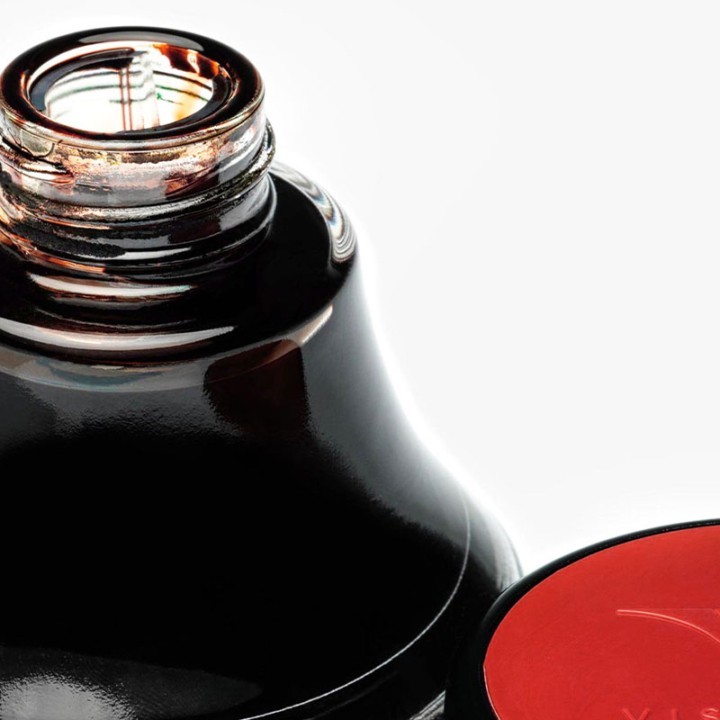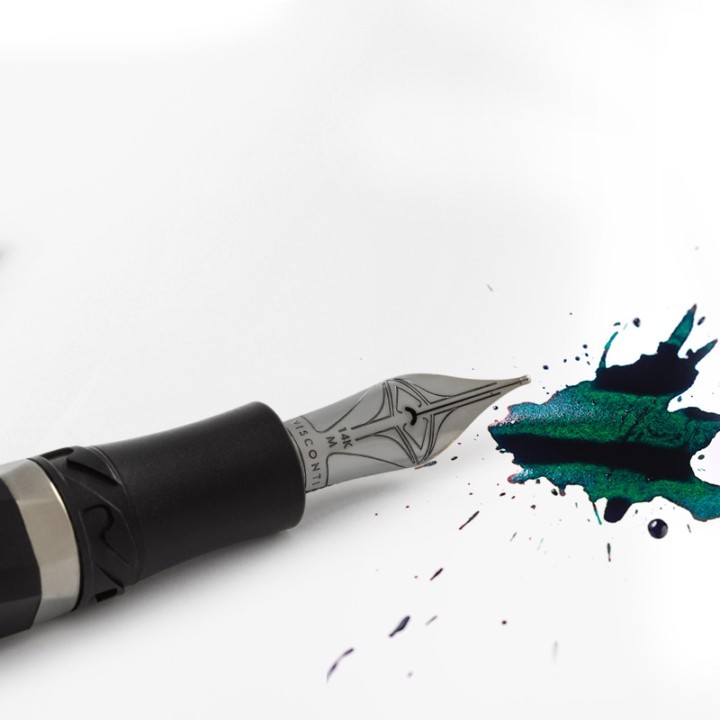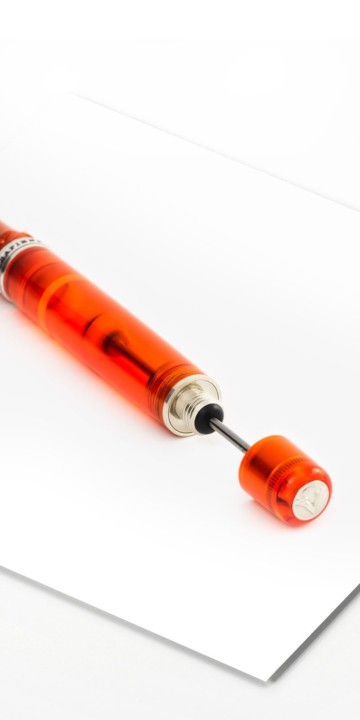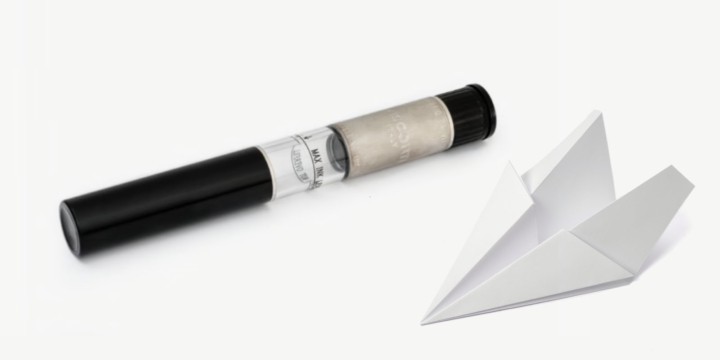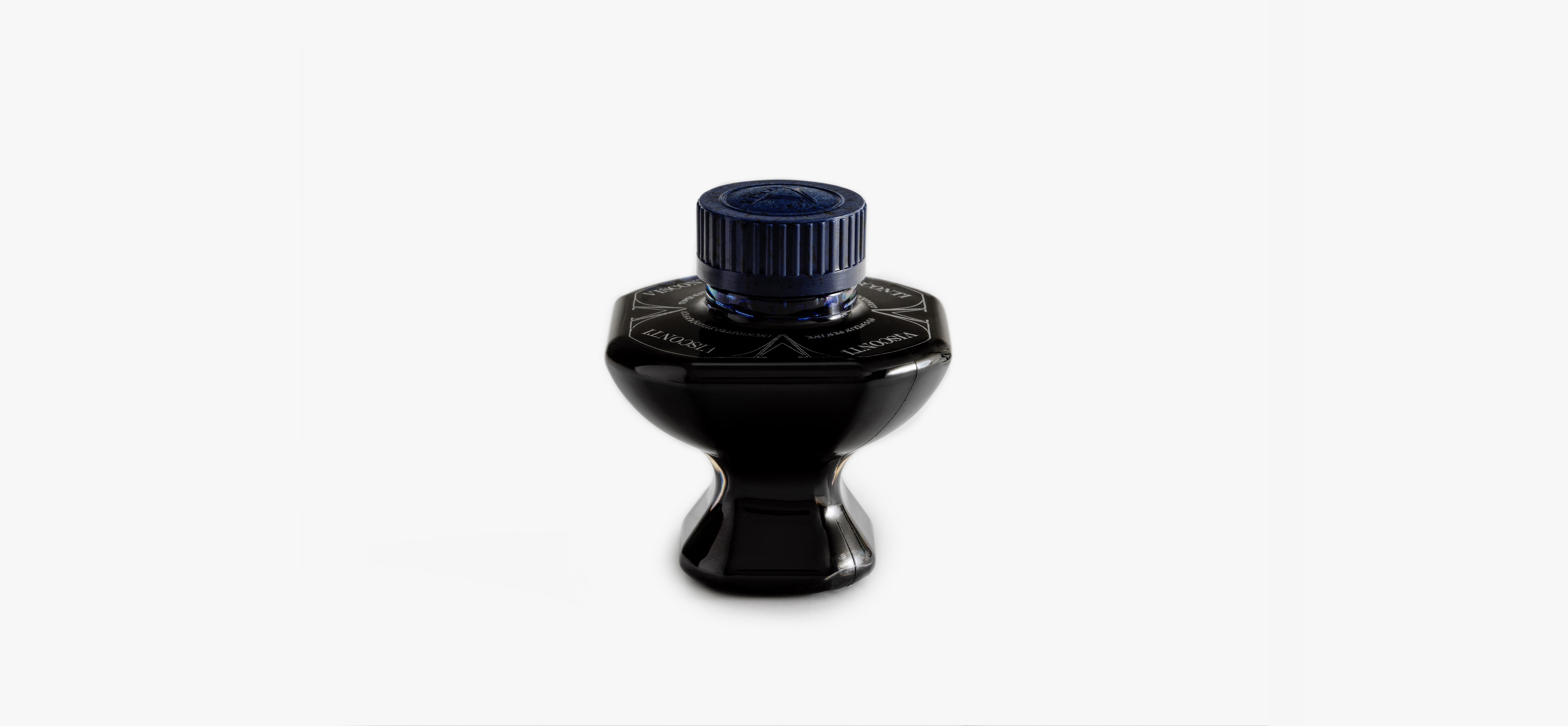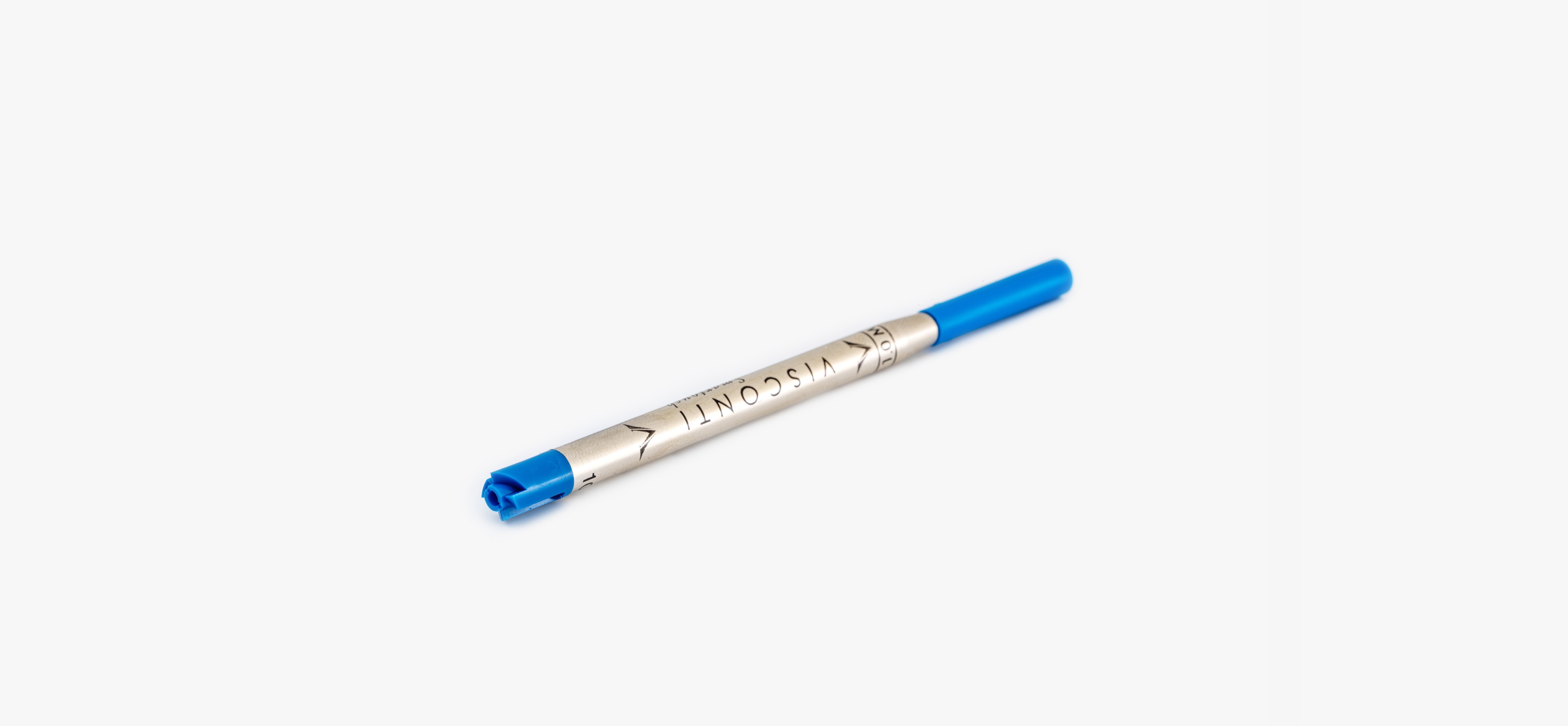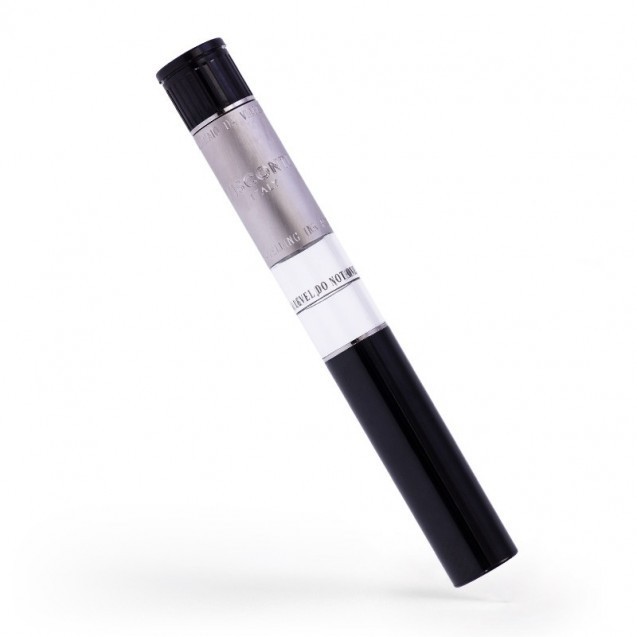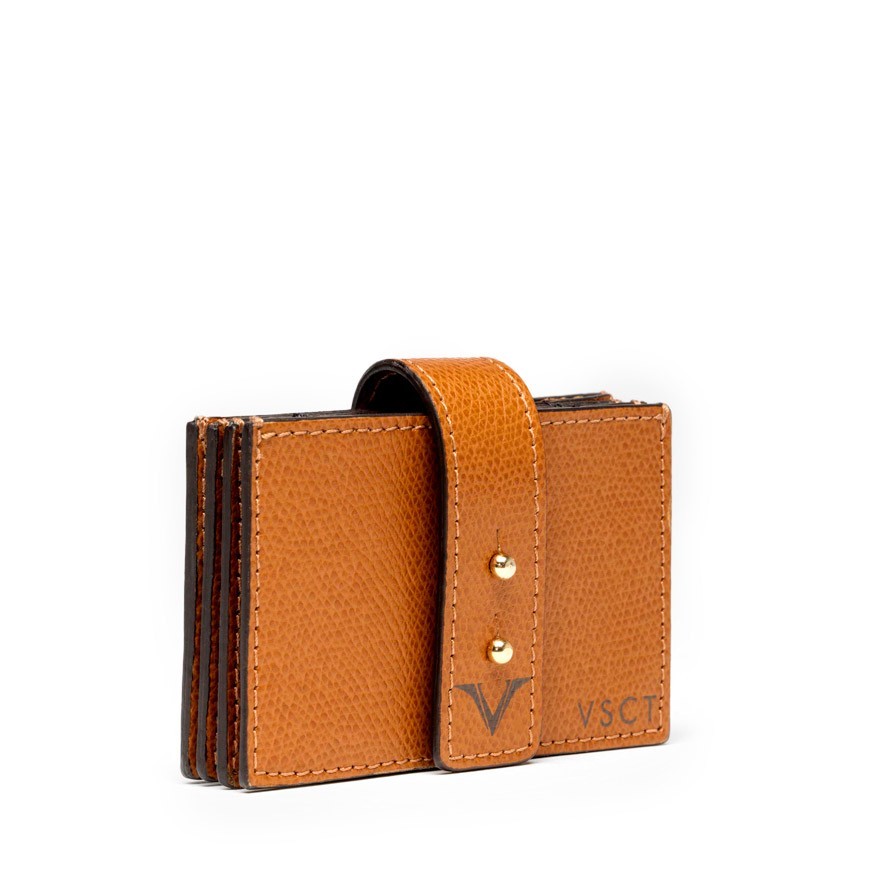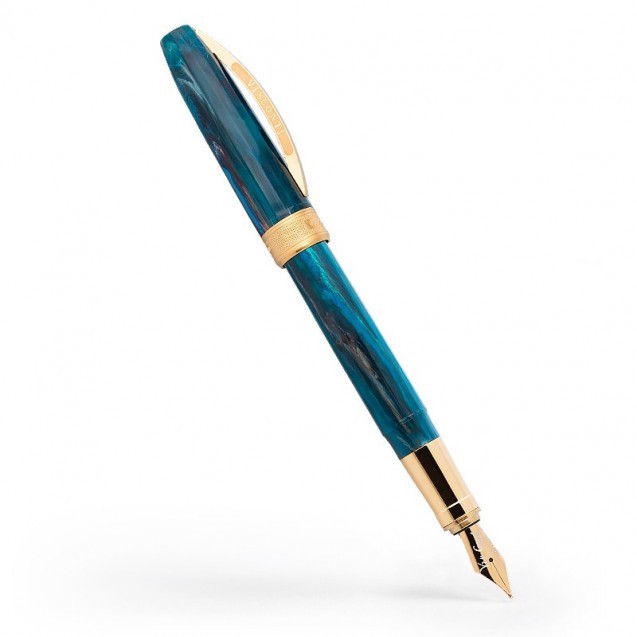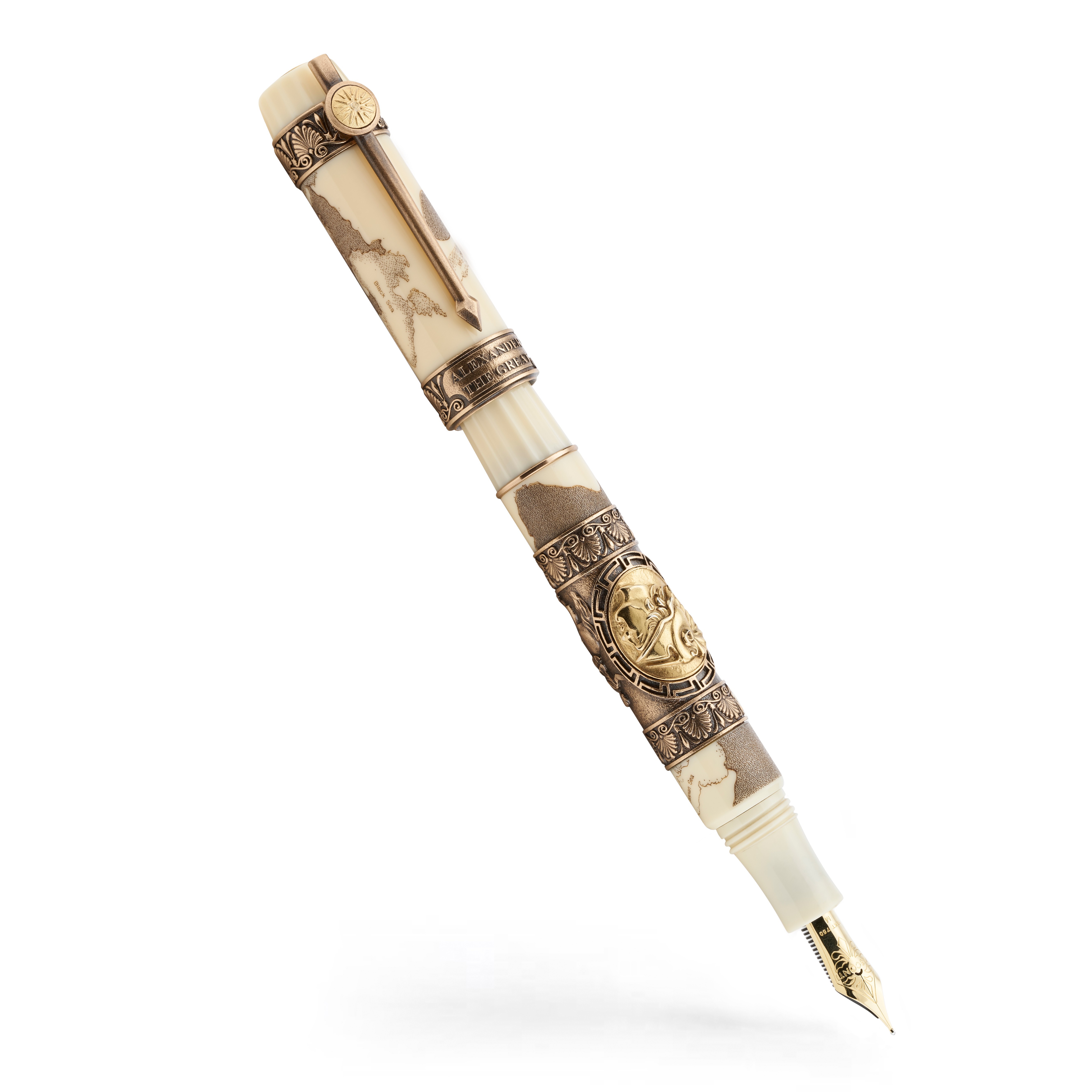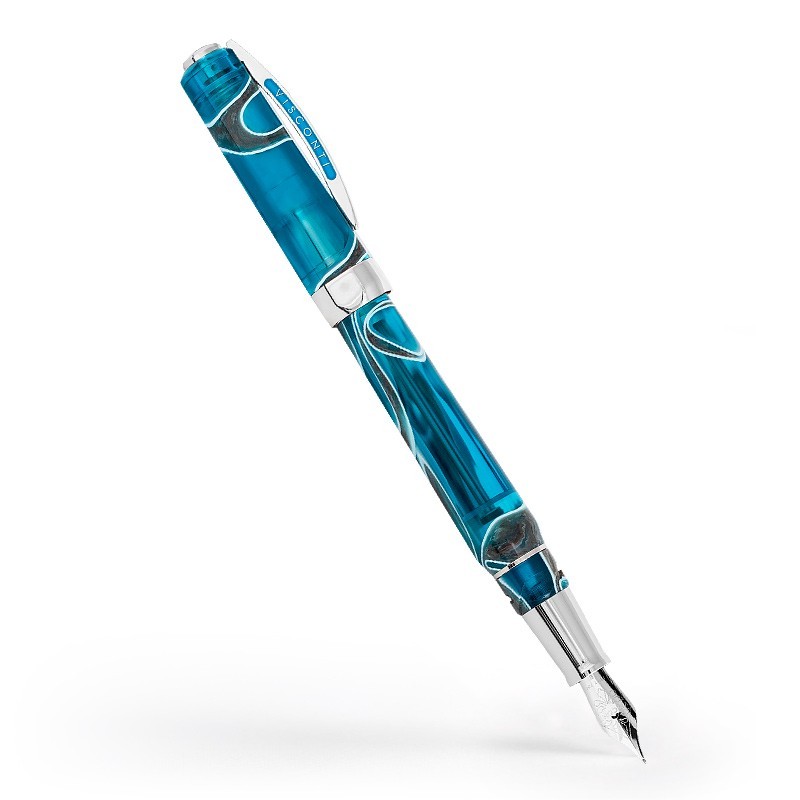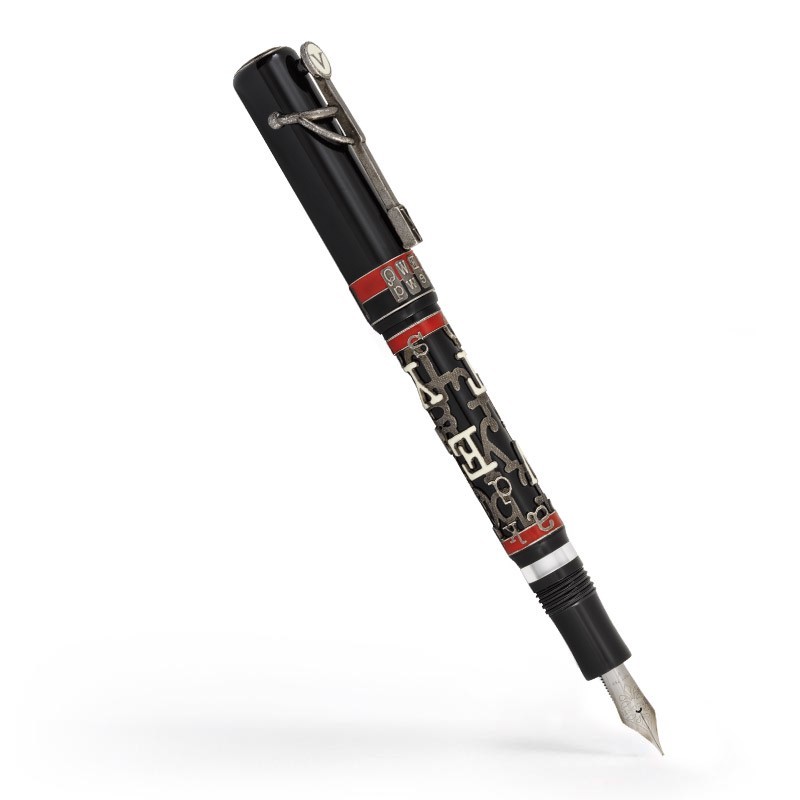Latest articles - Writing
Pen and inkwell, an elegant way to refill your writing instruments
20.06.2022Return to the roots of the first writing systems with a fountain pen and inkwell.
Writing with a fountain pen and refilling it when the ink runs out is a true ritual for any writer. The new Visconti inkwell, with its minimalist yet striking design, is undoubtedly an indispensable tool to transport ink and refill your pen without sacrificing aesthetics.
Practicality in a bottle
Our glass inkwell, available in six colours (blue, black, red, sepia, turquoise and green), perfectly symbolises stability and elegance. Designed with timeless aesthetics and sustainability in mind, the bottle can be reused countless of times and ensures an even filling of the ink reservoir. The glass cylinder inside the inkwell is designed to always collect the exact amount of ink needed, thus limiting waste.
The new inkwell, with its fountain-shaped silhouette, has a wider base for maximum stability. The cap, which echoes the colour of the ink within, covers the second bakelite cap, a material known for its heat-resistant properties.
Practical and efficient, the inkwell is one of the oldest and truest refilling methods. In order to make this operation easy even when on the move, Visconti also offers a travel inkwell, a hallmark of Visconti accessories for over 20 years.
The travel inkwell
Designed in 1997, the travel inkwell facilitates the refilling of pens, making it an accurate, clean and safe process even on the move.
To be used while travelling or from the comfort of your home, this smart tool was conceived as a modern alternative to the traditional bottle, but can also be used to refill vintage pens with rubber reservoirs or lever fillers, making it one of the most popular items in our line of writing instrument accessories.
The origins of the inkwell
An inkwell is a vessel made of glass, porcelain or other materials created to store ink. The first ones were made out of stones with carved out centers to house the ink. This container’s main function is to prevent the ink’s oxygenation and evaporation.
Over the centuries, the inkwell went from being a merely functional object to a decorative one. It was continuously redesigned in new shapes and materials by craftsmen who wanted to put their personal touch on this everyday object. Over the years, shells and animal horns, the materials chosen for the first exemplars, were replaced by specially designed bottles made of resistant materials.
One of the most revolutionary inventions in this field takes us to France in the early 19th century. In 1836, the French royal chancellor Noel Pierre Chaulin, the so-called ‘Papetier du Roi’, developed a siphon inkwell inspired by bird troughs, in an attempt to remedy the problems of ink deterioration due to evaporation and contamination by dust.
Numerous artistic interpretations have made the inkwell a valuable collector’s item. Joseph and John Angell, two London silversmiths from the 1800s were famous for their sterling silver and gilded inkwell creations in different styles ranging from the more naturalistic to the extremely ornate. These luxurious specimens are still sold at auction today.
Get ready to write a new chapter in the history of the inkwell with the new model designed by Visconti.


